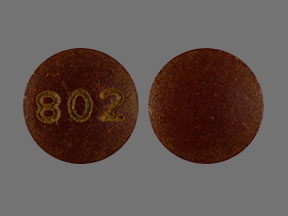
Phenazopyridine Coupons & Savings Card – Discount Prices from $3.66
Generic for: Pyridium, Azo tabs, Sm urinary pain relief
My prescription
Edit
200MG, Phenazopyridine (6 Tablets)
Select pharmacy

CVS
$18.55
COUPON PRICE
Walmart
$3.66
COUPON PRICE
Walgreens
$4.71
COUPON PRICE
Albertsons
$9.00
COUPON PRICEPhenazopyridine savings card
Show this card to your pharmacist
Walmart
$3.66
BIN
ID
PCN
GRP
019876
LHA1C11CCE
CHIPPO
LHX
Powered by
More prescriptions for urinary tract infection
More prescriptions for urinary tract infection
Price history for Pyridium (brand) & Phenazopyridine (generic)
6 Tablets, 200MG
Average retail price for Pyridium
Average retail price for Phenazopyridine
Average SaveHealth price for Phenazopyridine
Our price history data is based on aggregated prescription data collected from participating pharmacies in America. Our prescription data updates daily to reflect the latest price changes. If you notice a missing data point, it means there wasn't sufficient data available to generate a monetary value for that date.
We analyzed Phenazopyridine prices for (200MG, 6 Tablets) over the last 12 months. The average retail price was $36.17, while the average price using the SaveHealth discount card was $13.01. That's a savings of approximately 64.03% when using our Phenazopyridine coupon.
Compared to the generic version, Pyridium had an average price of $47.59 over the same time period. With the SaveHealth savings card, Phenazopyridine is 72.66% cheaper on average than Pyridium.
*Retail prices are based on pharmacy claims data, and may not be accurate when we don't have enough claims.
Phenazopyridine dosage forms
Dosage Quantity Price from Per unit 95MG 30 Tablets $12.69 $0.42 95MG 96 Tablets $20.81 $0.22 100MG 4 Tablets $3.17 $0.79 100MG 6 Tablets $3.51 $0.58 100MG 8 Tablets $3.85 $0.48 100MG 9 Tablets $4.02 $0.45 100MG 10 Tablets $4.19 $0.42 100MG 12 Tablets $4.52 $0.38 100MG 15 Tablets $5.03 $0.34 100MG 18 Tablets $5.53 $0.31
| Dosage | Quantity | Price from | Per unit |
|---|---|---|---|
| 95MG | 30 Tablets | $12.69 | $0.42 |
| 95MG | 96 Tablets | $20.81 | $0.22 |
| 100MG | 4 Tablets | $3.17 | $0.79 |
| 100MG | 6 Tablets | $3.51 | $0.58 |
| 100MG | 8 Tablets | $3.85 | $0.48 |
| 100MG | 9 Tablets | $4.02 | $0.45 |
| 100MG | 10 Tablets | $4.19 | $0.42 |
| 100MG | 12 Tablets | $4.52 | $0.38 |
| 100MG | 15 Tablets | $5.03 | $0.34 |
| 100MG | 18 Tablets | $5.53 | $0.31 |
| 100MG | 20 Tablets | $5.87 | $0.29 |
| 100MG | 21 Tablets | $6.04 | $0.29 |
| 100MG | 24 Tablets | $6.54 | $0.27 |
| 100MG | 30 Tablets | $7.56 | $0.25 |
| 100MG | 90 Tablets | $17.67 | $0.20 |
| 100MG | 96 Tablets | $18.68 | $0.20 |
| 100MG | 100 Tablets | $19.35 | $0.19 |
| 100MG | 500 Tablets | $55.00 | $0.11 |
| 200MG | 6 Tablets | $3.66 | $0.61 |
| 200MG | 3 Tablets | $3.08 | $1.03 |
| 200MG | 4 Tablets | $3.27 | $0.82 |
| 200MG | 9 Tablets | $4.24 | $0.47 |
| 200MG | 10 Tablets | $4.43 | $0.44 |
| 200MG | 12 Tablets | $4.82 | $0.40 |
| 200MG | 15 Tablets | $5.40 | $0.36 |
| 200MG | 18 Tablets | $5.98 | $0.33 |
| 200MG | 20 Tablets | $6.37 | $0.32 |
| 200MG | 21 Tablets | $6.56 | $0.31 |
| 200MG | 24 Tablets | $7.14 | $0.30 |
| 200MG | 30 Tablets | $8.30 | $0.28 |
| 200MG | 90 Tablets | $19.91 | $0.22 |
| 200MG | 96 Tablets | $21.07 | $0.22 |
| 200MG | 100 Tablets | $21.84 | $0.22 |
| 200MG | 500 Tablets | $71.50 | $0.14 |
Phenazopyridine Warnings
The information below highlights crucial safety details and warnings associated with the use of this medication. It is important to read these carefully and discuss any concerns with your healthcare provider.
Risk of Low Red Blood Cell Count (Hemolytic Anemia): Individuals with glucose-6-phosphate dehydrogenase (G6PD) deficiency may experience an increased risk of hemolytic anemia when using phenazopyridine (Pyridium). This condition leads to the rapid breakdown of red blood cells, resulting in a decreased overall red blood cell count. Be vigilant for symptoms such as paleness, excessive fatigue, rapid heartbeat, or shortness of breath and consult your healthcare provider if these occur.
Overdose Risks: Taking phenazopyridine (Pyridium) in excess can lead to serious side effects, including damage to the kidneys or liver. Even individuals without G6PD deficiency may develop hemolytic anemia if they exceed the recommended dosage. Symptoms of overdose may include yellowing of the skin and eyes, fatigue, confusion, dizziness, or an irregular heartbeat. If you experience any of these symptoms, discontinue use immediately and contact a healthcare professional.
Contraindications: This medication should not be used by individuals with severe kidney or liver issues, as it poses significant health risks. If you have any of these conditions, seek advice from your healthcare provider before proceeding with this medication.
Please ensure you follow these guidelines to minimize risks and protect your health.
Phenazopyridine Side Effects
Common side effects:
- Headache
- Nausea
- Vomiting
- Diarrhea
- Rash
- Itching
- Upset stomach
Less common but important to monitor:
- Vision changes
- Anemia
- Issues with kidney function
- Issues with liver function
Serious side effects:
- Yellowing of the skin or eyes
- Dark urine
- Changes in urine output
- Bloody urine
- Abdominal pain
- Fever
- Chills
- Easy bruising or bleeding
- Unusual tiredness
- Shortness of breath
- Fast heartbeat
- Seizures
- Severe allergic reaction symptoms (rash, severe dizziness, difficulty breathing)
Phenazopyridine Interactions
Interactions with moderate risk that may require dose adjustment, closer monitoring, or timing changes:
- medications or supplements
